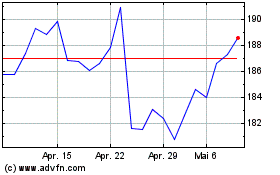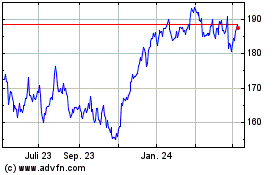European Exchanges Curb Trading Amid Wild Moves
09 März 2020 - 4:48PM
Dow Jones News
By Anna Isaac
European exchanges on Monday deployed trading curbs to prevent
disorderly markets on one of the most turbulent days since the
aftermath of the Brexit vote.
Unlike their U.S. counterparts, major exchanges in Europe don't
have automatic trading suspensions for indexes if they rise or fall
by certain levels. These suspensions in trading, known as circuit
breakers, hit the U.S. on Monday, as the S&P 500 and Dow Jones
Industrial Average dropped sharply at the open.
Rather than a blanket calculation, securities listed at the
London Stock Exchange Group PLC, which hosts the FTSE 100, and
Deutsche Boerse AG's Xetra, which calculates the pricing for the
German Dax index, measure swings on individual securities. It
temporarily slows markets by moving to less fast-paced auctions
rather than live trading when certain measures of volatility are
hit.
In the first three hours of the trading Monday in Germany, there
were 1,300 "extended volatility interruptions" on the Xetra trading
platform. This was unusually high compared with normal operations
and surpassed that of June 24, 2016--the day after the Brexit
referendum--in which there were 1,198 interruptions throughout the
entire day's trading.
On the FTSE 100, the LSE implemented 78 "price monitoring
extensions," which slow down trading of certain stocks to allow
traders longer to consider their positions. This was a similar
level to the immediate aftermath of the Brexit vote.
Write to Anna Isaac at anna.isaac@wsj.com
(END) Dow Jones Newswires
March 09, 2020 11:33 ET (15:33 GMT)
Copyright (c) 2020 Dow Jones & Company, Inc.
Deutsche Boerse (TG:DB1)
Historical Stock Chart
Von Mär 2024 bis Apr 2024

Deutsche Boerse (TG:DB1)
Historical Stock Chart
Von Apr 2023 bis Apr 2024
